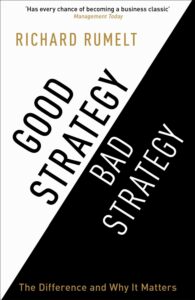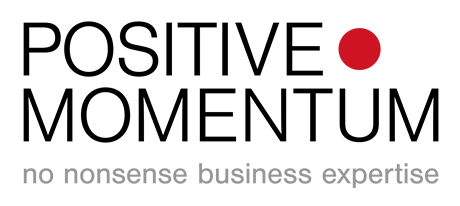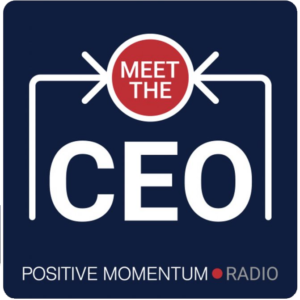Photo 181523362 © Duccio | Dreamstime.com
“Strategy is a story – and we all own that story” – the words of a client on a recent live-streamed event we produced for their top leadership.
On the face of it, it’s such a simple statement, but it actually goes right to heart of leadership, and to the power of storytelling to engage your team, customers and shareholders.
Let’s unpack why strategy is a story, how you can articulate it as a story, and how the strategy story is such a powerful way to unite everyone in and around your business and keep them engaged.
 The central thesis in Richard Rumelt’s book ‘Good Strategy / Bad Strategy’ is that the kernel of a good strategy contains three elements: A diagnosis of the challenge, a guiding policy, and coherent action.
The central thesis in Richard Rumelt’s book ‘Good Strategy / Bad Strategy’ is that the kernel of a good strategy contains three elements: A diagnosis of the challenge, a guiding policy, and coherent action.
Rumelt’s kernel is actually a journey: starting from where are we are now, where we want to get to, and including what do we need to do to get there.
Now it becomes a story with a narrative. When I asked my 10-year old what stories he liked most, he immediately said ‘journeys’.
Some of the best stories are journeys: J.R.R.Tolkein’s ‘The Hobbit’, L.Frank Baum’s ‘The Wonderful Wizard of Oz’, Homer’s ‘Odyssey’.
To the journey, add in characters (preferably ones you can identify with), and jeopardy – (What’s at stake, and what happens if we don’t make it?) and you have the foundation of your strategy story.
Build your strategy story:
The Journey
It might sound obvious, but the journey needs the start AND the end points. Without the destination you don’t know where you’re going, but without the start point, you don’t know how far you have to travel and in which direction.
Start at the beginning, take a good honest look at where you are now. How are you doing in the current market? What are you good at, and not so good at?
Then define the destination. Where do you want (or need) to go in the future? When I run strategy workshops I structure this destination mapping around 3 C’s
- Context: What future are we heading towards? To answer this I’d recommend examining some key aspects of the conditions in that future – technology trends, political trends (like government, regulation, the ease of doing business), the shape of the economy, the environment, and changing societal attitudes
- Customers: What will our customers need in that future?
- Competition: What will our competitors (at least the ones we know of now) do in that future?
Once you have set your destination it’s time to consider how you’re going to get there – what capabilities you will need. In his book, Rumelt talks about unique ‘strengths’ – for example David used bravery and agility to defeat Goliath; another advantage is called ‘leverage’ – which is understating where to apply your focus for maximum impact; and he discusses how to combat the often slowing forces of inertia (resistance to change) and entropy (the oxidation layer which dulls focus).
The Characters
Characters win over concepts every time, because they appeal to our emotional side.
Intrinsically we want to empathise with characters. We cannot connect with numbers or plain facts in the same way. And that’s probably the best reason I can think of not to run Powerpoint slides when you’re trying to get your audience on board with a story. (There’s another reason coming in a few paragraphs, too.)
The interplay between heroes and villains, or a protagonist’s oscillation between triumph and adversity, is behind the emotional rollercoaster which keeps us gripped: the swing between cortisol & adrenalin and oxytocin & dopamine.
I’ll leave the detailed explanation of the neuroscience behind storytelling to the neuroscientists – there’s more here [HBR] and here [Berkeley].
Back to your strategy story. The characters in it aren’t just the C-suite – they’re your people, your customers, and your shareholders.
If your audience sees themselves in the story, then you immediately have a fast-track to engagement: Your story is about them. They’re the heroes. Put them at the centre of your strategy story and they’re locked in, because they’re empathising with themselves!
The Jeopardy
Onto to the final ingredient, the jeopardy. This is the ‘so what?’, the ‘why should I care?’.
When you set the destination in your strategy story, you will need to explain why you’re choosing that path. On one level there’ll be an answer relating to winning, growing revenues and profits, possibly an IPO – that’s all important. These are all what Paul J. Zac in HBR calls ’transactional purpose’, but his research, among others’, shows that people connect far better with something more fundamental, the ‘transcendent purpose’. How does your business improve the world and people’s lives? Think Daniel Pink’s ‘Why?’.
The transactional purpose can be expressed easily on a Powerpoint chart or table. The transcendent purpose demands the story, and the rationale for your strategy should be based firmly is your business’s purpose, or Patrick Lencioni’s question for businesses ‘why do we exist?’.
Now the jeopardy in the strategy story is not just about whether you reach your destination, but also whether you fulfil your purpose as a business, and what that means to all the characters involved in both the business and its story.
Each character in the strategy story has their own relationship with the journey – what it means to them. So in fact your strategy story is a collection of ‘sub plots’ – personal stories within the story, journeys of self development, each with their own jeopardy. The challenge of leadership here is to bring out those individual stories in team members as owned expressions of the bigger narrative. In fact the strategy story both energises and is energised by these personal stories & motivations.
‘Coherent action’ is part of Rumelt’s kernel of good strategy: doing things which fit together and work together towards a common end. Speaking on Positive Momentum’s Meet The CEO podcast, The CEO of Centaur Media, Swag Mukerji, talks about ‘goal congruence’. Congruence and coherence is essential, and conversely its absence can be toxic.
“The CEO’s responsibility is to articulate a compelling and clear strategy which [the executive leadership team] understand really well.”
Swag Mukerji, CEO of Centaur Publishing, speaking on the Meet The CEO podcast.









